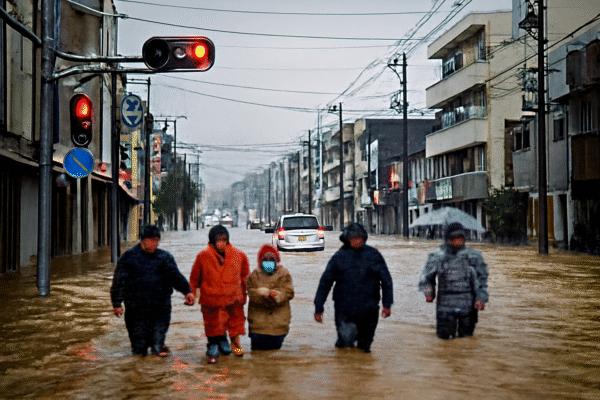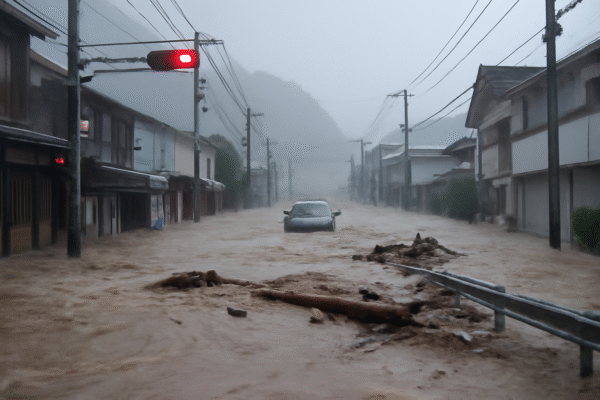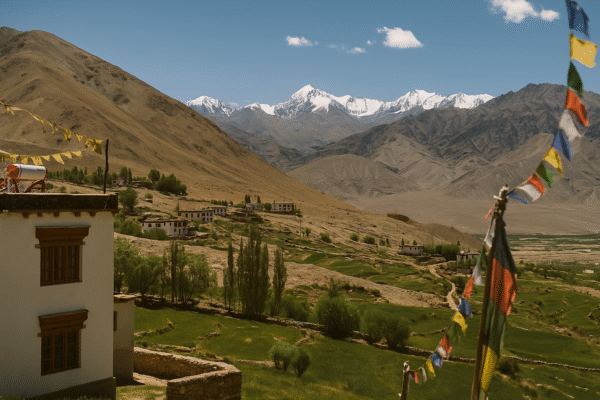Ladakh is emerging as a model for sustainable mountain tourism, introducing innovative policies that balance rapid tourism growth with environmental protection and community empowerment. As the number of visitors to the Union Territory continues to climb, local authorities are ensuring that economic benefits are shared while the region’s fragile ecosystem remains preserved.
Homestay Policy: Empowering Local Communities
The Ladakh Homestay Policy 2023 was launched to promote rural and border-area tourism. It enables local households, especially women’s self-help groups, unemployed individuals, and ex-servicemen, to operate homestays outside protected zones. The policy provides support in the form of homestay kits, skills training, and essential amenities such as solar water heaters, mattresses, bed frames, and washing machines. By encouraging tourists to stay with local families, the initiative not only offers visitors authentic cultural experiences but also distributes tourism income more equitably across the community.
Adventure Tourism Safety Guidelines
Recognizing Ladakh’s popularity among adventure seekers, the administration has introduced updated rules for adventure tourism operators in line with the National Strategy for Adventure Tourism 2022. All operators involved in activities like trekking, mountaineering, mountain biking, and river rafting must register with the administration every three years, paying a nominal registration fee. They are also required to comply with stringent safety standards across 18 categories of adventure sports. These measures are designed to ensure professional conduct, maintain equipment safety, and reduce the risk of accidents in challenging terrains.
Eco-Friendly Infrastructure Initiatives
Environmental sustainability is central to Ladakh’s tourism vision. The 2024 Sewerage Treatment Plant Incentive Scheme encourages small hotels, guesthouses, and homestays to install decentralized wastewater treatment systems. This step aims to protect pristine lakes, rivers, and groundwater from pollution, thereby preserving Ladakh’s natural beauty and biodiversity. Such measures reflect a growing commitment to green infrastructure that safeguards the environment while accommodating increasing tourist numbers.
Tourist Police for High-Altitude Safety
Tourist safety, particularly in remote and high-altitude locations, has been significantly enhanced through the Ladakh Tourist Police Unit, established in 2021. Deployed in key tourist areas like Khardung La and Pangong Tso, these trained personnel provide guidance, maintain security, and offer emergency rescue services. Their presence ensures that travelers can explore Ladakh’s challenging landscapes with confidence and peace of mind.
Central Government Support and Investment
Ladakh has benefited from substantial central funding aimed at developing tourism infrastructure and cultural projects. Under the Swadesh Darshan scheme, funds have been allocated for the creation of the Julley Leh Biodiversity Park, which showcases the unique flora and fauna of the trans-Himalayan ecosystem. The Assistance to Central Agencies scheme has supported projects such as the “Exploring LOC and Hundarman Village Experience” in Kargil, enhancing cultural tourism and offering visitors deeper insight into the region’s history. Other initiatives include sound-and-light shows in Leh and a multimedia water-screen show in Kargil, designed to make heritage storytelling more engaging.
Since 2016-17, Ladakh’s tourism circuits have received over Rs 250 crore in funding through various government schemes. These investments reflect the strategic importance of Ladakh in India’s tourism portfolio and its potential as a year-round destination.
Ladakh as a Model for Responsible Tourism
The combination of community-driven policies, strict adventure tourism regulations, eco-friendly infrastructure, and specialized tourist policing has positioned Ladakh as a leader in responsible tourism development. The Homestay Policy reduces reliance on commercial hotels, ensuring that the benefits of tourism reach rural families. Adventure guidelines prioritize safety without compromising the thrill of outdoor activities. Green initiatives protect the environment, and the tourist police enhance safety in some of the world’s highest inhabited regions.
Broader Impact on India’s Tourism Landscape
Ladakh’s success story is inspiring similar sustainable tourism approaches across India. In Tamil Nadu, coastal heritage circuits are being developed to highlight historic temples and seafront towns. In Varanasi, riverfront projects are improving the cultural and spiritual tourism experience along the Ganges. These thematic circuits are part of a broader national movement to create unique, high-quality travel experiences while preserving heritage and nature.
Future Outlook
As Ladakh continues to attract travelers seeking adventure, culture, and natural beauty, these carefully crafted policies will be vital in managing growth without overburdening the environment or local communities. The region’s proactive approach demonstrates that tourism can be both profitable and sustainable when guided by thoughtful planning and community participation.
With its mix of cultural immersion, environmental responsibility, and adventure opportunities, Ladakh stands poised to remain one of India’s most sought-after destinations—proving that preserving a place’s soul can go hand in hand with welcoming the world.
For more travel news like this, keep reading Global Travel Wire


















